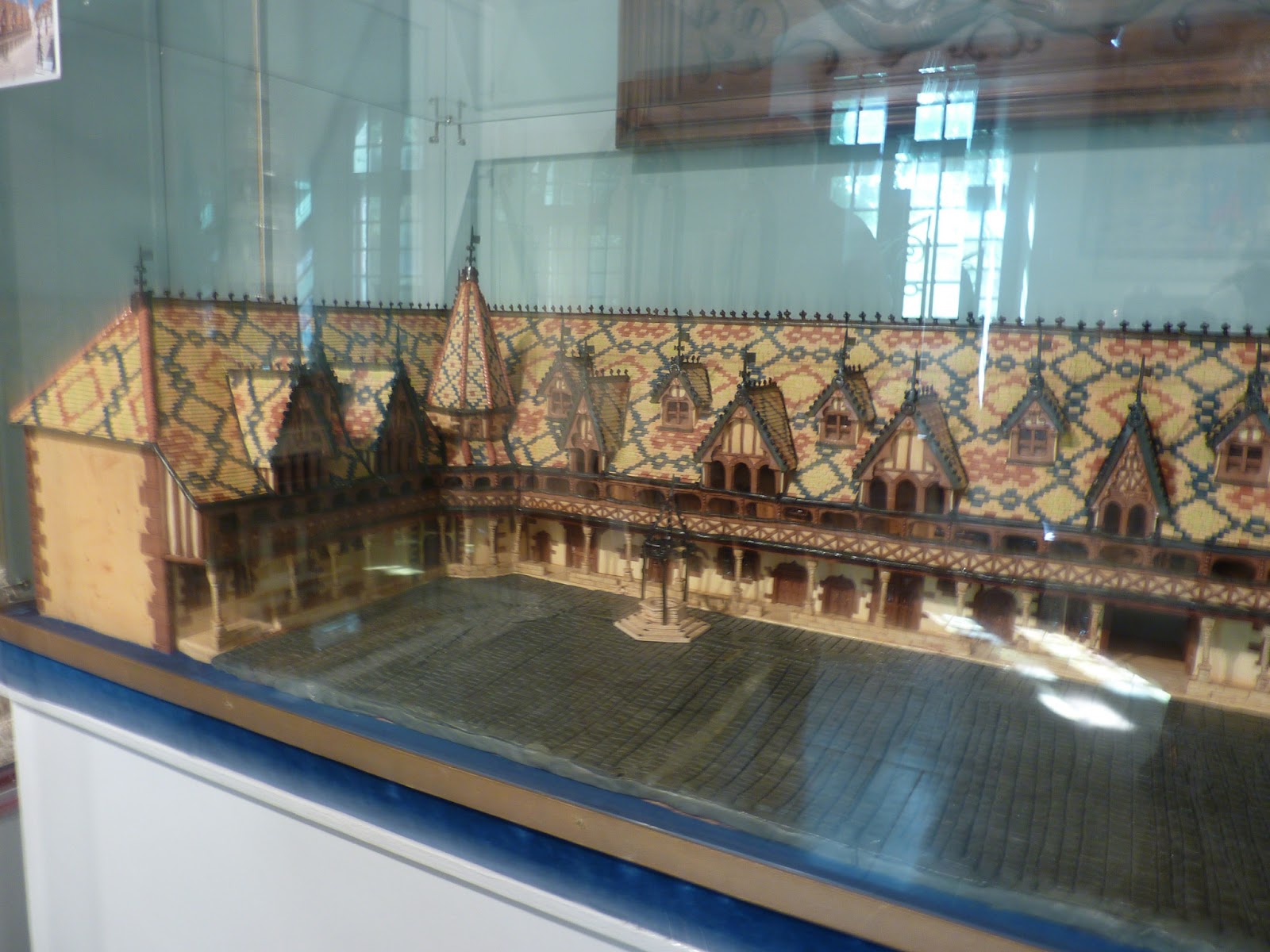 |
| Les Hospices de Beaune |
We were in Tours ostensibly for a photographic exhibition, but as that didn't open till the afternoon, and as we were wanting to spend the day over there, Mike researched what else was on and found Le musée du Compagnonnage - the history of the guilds for the building/construction trades. But there were obviously many other organisations affiliated to guild membership as the presence of the cake indicates. The museum's website has English translation facility, but just briefly. . .
Le musée du Compagnonnage showcases the collection of master carpenter Pierre François Guillon (1848-1923), who was a member of a guild known as The Duty of Freedom. The guilds are regarded as the precursors to unions (les syndicats), with some masonic tendencies thrown in. Pierre François Guillon founded a school for the construction of design arts in 1871, where he taught carpentry, joinery and stonework to apprentices from all over France and abroad for fifty-two years. After his death, his son donated his father's papers, models and student's materials for a museum which was built originally in 1928. In 1994 the building was renovated, and new rooms added. The original collection has been greatly expanded through bequests and acquisitions to present a comprehensive social history of the guild system. For us it was an excellent introduction to the range of skilled craftsmen that operated in our region. Up until this point, we were mainly aware of stone masonry - an ongoing and much needed profession with all the the chateaux here in the Indre et Loire. There are still traditional boat makers, clog makers and black smiths. But Le musée du Compagnonnage provides a much wider context with models, that were themselves masterpieces, as well as the different 'uniforms' that members of each guild wore to distinguish themselves.
Barrel makers, carpenters, roofers, shoe makers, chefs de patisserie, blacksmiths and
farriers, rope makers - such an interesting collection of professions. One in particular was of relevance to my own family through my father. My father was born in Henley-on-Thames on 10 May 1911. He was the youngest of three, all were too young fortunately, so missed WW1. He was apprenticed to a wheelwright as a young man, somewhere near to Henley. The details including how old he was when this happened are now in storage. Amongst the documents is his deed of apprenticeship. Very official and elaborate in appearance, the handwriting is of it's time, full of swirls and curls, with seal and ribbon attached. Working with wood was something he loved all his life, even though his abilities took him into a completely different profession in London. The wardrobes and cupboards in our family home were made by him with such care and skill, in his workspace in the garage. I still have his tools, which are now of an age. I ought to find a proper home for them. Amongst the few family photos I have of him from that time, is one where he's sitting in the foreground with his three workmates in the company backyard, having a break, in hobnailed boots, dark overalls with his sleeves rolled up and arms folded. There's a look of contentment on his face. The tools might go, but not the photo.


No comments:
Post a Comment